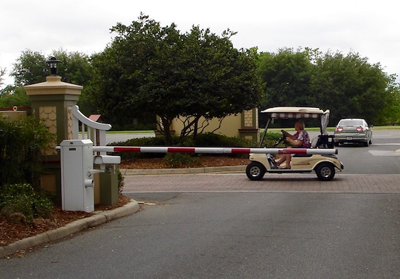Will Price Be a Barrier to the Lithium Battery Market?
It seems that every time there is a innovation suggested in small vehicles, such as our personal transportation vehicles (PTVs), the immediate concern by manufacturers and marketers is price rather than performance. The introduction of lithium power into the universe of small vehicles is no different in this regard. Ultimately, we as the consumer base for lithium batteries (for PTVs) will make or break the market; that is, we will decide whether the extra cost is offset by better performance.
Prediction: Lithium will take over
As a lifelong market researcher, and having concentrated the past two decades on small, task-oriented vehicles (STOVs) of al sorts, including golf cars, PTVs, utility vehicles, and off-road vehicles, the market reports generated by my company, Small Vehicle Resource, LLC, are rife with predictions and forecasts—and, for the most part they have been on target.
One small example of this: the forecast regarding AC electric motors. Not so long ago, the timorous were hesitating because the AC motor would be more expensive than DC motors. Our view at the time was that the better incremental performance of AC motors would be more than compensatory. As you know, AC power is now mainstream.
So, we have somewhat the same scenario with regard to lithium batteries. The really exciting thing is that there are now several battery makers that feature a “drop-in” lithium battery solution, thus opening up the vast aftermarket for PTVs for easy conversions from lead acid technology.
My prediction is that lithium power will take over much of the small vehicle market, and in the balance of this article, I will state my case.
The performance data: Lithium batteries compared to lead acid
Compared to lead acid batteries, the upfront cost of a lithium battery is quite a bit more. Eight 6-volt Trojan T105 batteries run about $1,900. Checking prices on golf car batteries from RELiON Battery and Allied Battery a lithium battery pack delivering 40-50 miles of driving distance will run between $2,200-$2,600. So, lets say the price difference could range between $400-$700. But once the performance differences are factored, especially with regard to the number of lifetime cycles, it is hard to argue that lithium is not the better buy.
By the way, it is very easy to make the conversion. In fact you can even order online and have your battery shipped directly to you. Once you have the battery in hand you need only extract the lead acid batteries (careful they are heavy), drop in the new lithiums, and hook up the cables. No need to change out the controller or even the charger (although Allied does promote its own charger). If you are uncertain about this you can always revert to your local golf car dealer or order through him.
As to the key performance differences, the table below gives you some idea about the tremendous edge lithium batteries have over lead acid. In choosing among brands, it’s always a good idea to check the reviews on third party internet-based distributor sites—and, of course, consult with your local dealer.
Market acceptance: The key factor in lithium battery market growth
Demonstrably better performance metrics for lithium will be, early-on, mostly “on paper”, and the real test of superiority will come from the experiences of actual users. As noted above, you will have internet access to the comments by the early adopters, and every new product has them. They pave the way for the more reserved, show-me followers.
And, I believe the followers will be there, the result of their own research, complemented by objective, educational promotions and advertising. In this case the key manufacturers, Club Car, E-Z-GO, and Yamaha, all have every incentive to tout lithium because the technology will clearly energize the PTV market, which is now their main revenue source, displacing fleet golf cars. Of course, the battery manufacturers will be promoting their product via YouTube, webinars, and other means. At this stage of market development each battery manufacturer, despite the fact they are in competition, has a common interest in seeing the market grow.
You could put it this way, for market take-off and early accelerated growth, the necessary condition will be superior performance metrics, as confirmed by the earl adopters, while the sufficient condition will be general market acceptance, fueled the much larger body of consumers that follow.
Transition to the urban mobility market
Lithium power will open up a new market for small vehicles, electric powered bikes, scooter, and shuttles, in urban and suburban environments. I have introduced readers to several of these small vehicles in past articles. Here is another entrant, and it would indeed, fit well in the urban mobility testing ground that is our gated community and its environs.
It comes from the Netherlands, is aimed directly at the urban mobility market, and is called the Squad. Here is what my cohort, Marc Cesare at Small Vehicle Resource, has to say about this new market entrant:
“Netherlands based Squad Mobility launched their Squad urban mobility vehicle last week. The electric powered Squad features solar cells on the roof, seating for two and a small, rear cargo area. The name Squad is short for solar quadricycle.
“The vehicle is designed for the European market and falls under the L6e or light quadricycle category. These vehicles are similar to low speed vehicles in the US. They can’t exceed 28 mph or have a battery pack larger than 4 kWh. The L7e category includes heavier vehicles with a top speed up to 50 mph and a 15 kWh battery pack limit. The vehicles have proven to be popular with teenagers and older drivers.”
Perhaps designed for the European market, but I would sure like to see them exhibit at the 2020 PGA Show.
Contact the Author: Steve Metzger at smetzger@smallvehicleresource.com. Or check out our website at www.smallvehicleresource.com, where you will find an extensive database of vehicle models and can make side-by-side comparisons of vehicles based on a full set of specifications.



